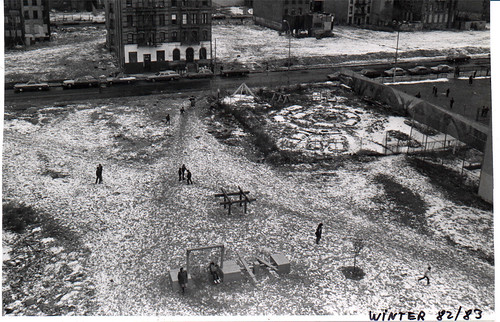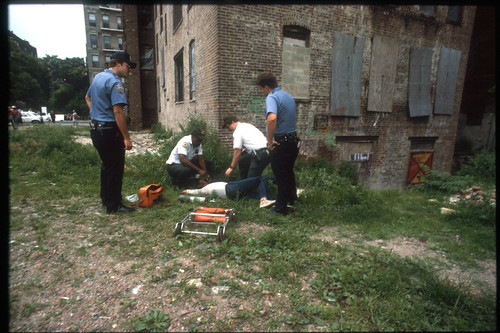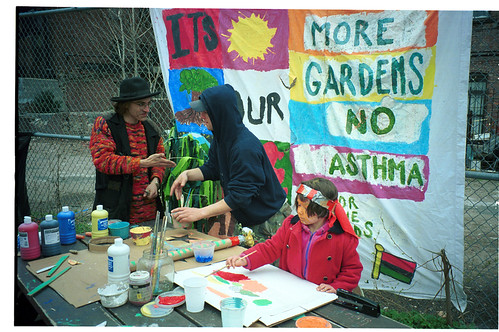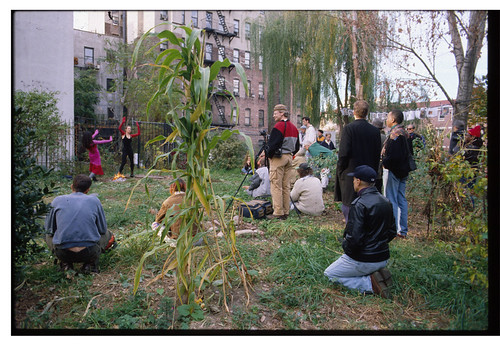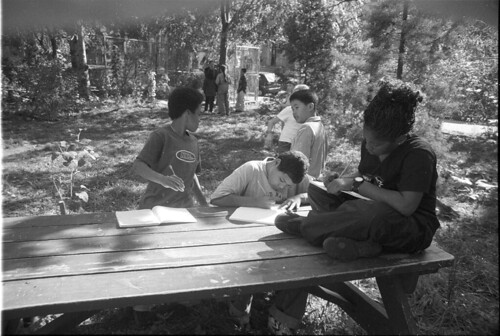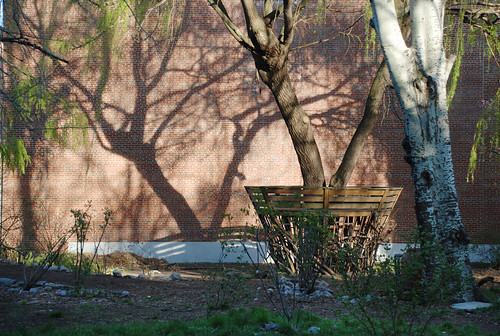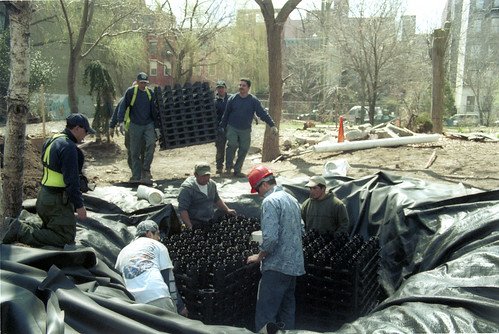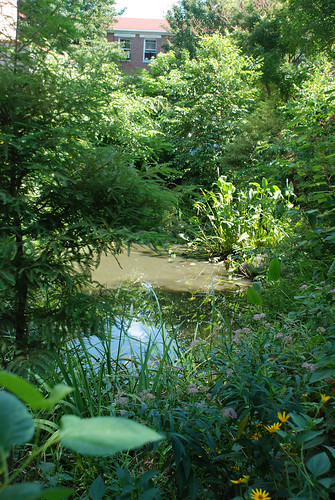Photographer David Schmidlapp shares photos (his own as well as a couple by Marlis Momber) from the archives of El Jardin del Paraiso on East Fourth Street between Avenue C and Avenue D, where he has volunteered for nearly 30 years. His work can currently be seen in the Nepenthes New York Gallery on 38th Street.
They demolished a lot of buildings in the neighborhood around the mid-1970s. This is how it looked east of First Avenue back then. You could see all the way to Seventh Street, and from Seventh Street you could see all the way to the Con Edison plant. There was plenty of parking back then.
This was a common sight in those days — not every day, but you saw it. I called the police several times to come help someone. I remember one time I saw them take out a body.
The vegetable garden is in the upper-right hand corner, and still exists today. All those trees in the picture were recently planted. That was a community workday and those are still going on.
The garden movement came out strong in the 1990s. There was always a sense of activism, and different garden groups staged events frequently. We were part of that spirit — that community vibe. This was some sort of rite of spring event.
I don’t know who is performing, but this is another common sight. I think this was part of an interactive sculpture show that took place over a week or so. They put sculptures all over the garden.
Several generations of schoolkids have grown up in that garden. On nice days in the 1990s kids would be out there, doing classes. Some gardens tell kids not to touch this, not to touch that. We try and be a bit looser in our environment.
The tree house is a site that kids love. Many classes have taken place there, too. It’s definitely a favorite among kids of all ages.
When we started the wetland in the garden, we had a partnership with a couple of professionals. Tom Muse, a landscaper, came in and led the installation of a water tank that holds around 400 gallons. It collects rainwater and feeds the pond. We store the water so we don’t have to use the city supply. We don’t store as much as we’d like to, though. We’re only collecting rainwater from one rooftop. Our goal is to get water from all rooftops in the area and have a real wetland.
The garden was all swamp land before the arrival of the white man. Trying to make the garden into a wetland again made sense; it would be ecological and educational. We’ve brought in certain vegetation that is native to the area, too. Just to have a glimpse of what it was like here — this could be pretty close.



